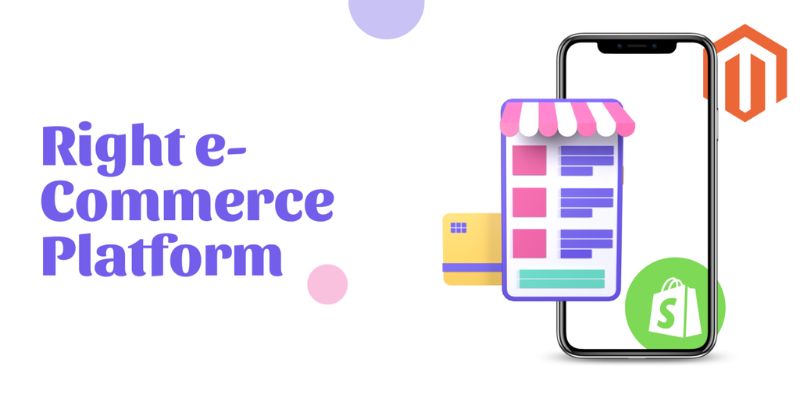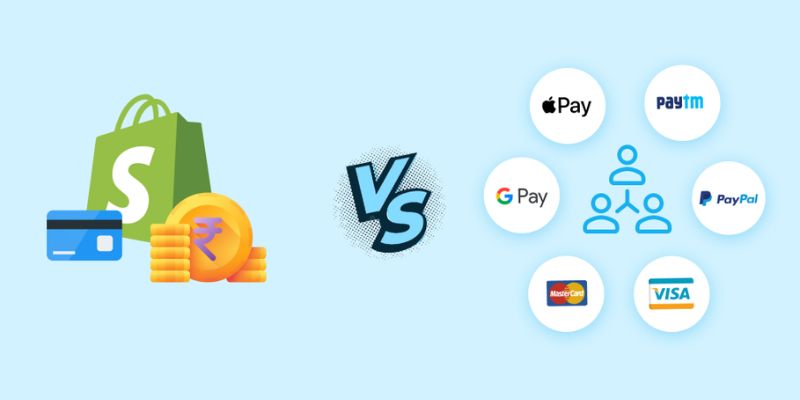Choosing the right e-commerce payment platform can feel like finding a needle in a digital haystack. You need a platform that not only ticks all the boxes for security and features but also nudges customers across the finishing line – converting browsers into buyers. This isn’t about picking any old system; how to choose an e-commerce payment platform is about laying a foundation that will grow with your business and support every sale. If you’re scouring the internet for that ideal match, look no further. Here, we break it all down: from dissecting gateway features and fees, to diving into what keeps customers happy at checkout. Let’s make every click count.
Understanding E-commerce Payment Systems
Evaluating the Best E-Commerce Payment Systems
When shopping for payment platforms, knowing what you need is key. It’s like choosing the best race car. You want one that’s fast, reliable, and doesn’t cost too much to run. Same goes for payment systems. They should make buying easy, keep money safe, and not break the bank with fees.
Look for a system that’s a breeze to add to your online store. Make sure it can handle credit cards, digital wallets, and even those new-fangled cryptocurrencies. It’s all about giving customers what they want. Make sure the platform can take payments from anywhere, in any currency. Your store goes global with the right setup.
Don’t forget to check how quickly it handles sales. If it’s slow, customers might bail, leaving their carts lonely. Fast equals more money in your pocket, sooner.
Assessing Secure Online Payment Options
Now, let’s talk safety. It’s a wild web out there, and you want your customers’ cash to be safe. Find platforms that stick to PCI compliance rules. This means they’re serious about security. Just like a seatbelt in a car, it’s there to keep everyone safe.
Secure options have layers of protection. Think tokenization and encryption. These are fancy words for scrambling data to keep it out of bad hands. Like a secret code, it’s tough to crack.
Always ask: “How’s their support if things go south?” A good service team can be a lifesaver. They should fight fraud like superheroes and handle chargebacks without breaking a sweat.
Choosing a payment system is big for your biz. It can scare customers away or make them fans for life. So take the time. Do the homework. Pick a winner, and watch your e-commerce store thrive.

Analyzing Payment Gateway Features and Fees
Payment Gateway Features Essential for Your Store
Picking a payment gateway is like choosing a cashier for your digital store. You want someone reliable, quick, and friendly to your customer’s wallet. You’re selecting payment gateways for online stores, right? So remember, the best e-commerce payment systems juggle speed, security, and ease like a pro. Now, let’s get down to business.
Secure online payment options are the talk of the town. They keep customers’ money safe like a steel vault. Every gateway has its own cool tricks. Some are great at fighting off bad guys with top-notch fraud prevention. Others make paying so easy, customers keep coming back for more. Payment gateway features should make the checkout experience feel like a breeze.
What’s that? You’re curious about PCI compliance requirements? Think of them as the rules of the payment road. Every car on this road needs to follow them, or there’s going to be trouble. Making sure you pick a gateway that follows these rules is key.
And cost-benefit analysis of payment systems? Oh, it’s like your shopping list. It helps you figure out if that fancy feature is worth the extra cash. Weigh your options, see what gives you more bang for your buck.
Transaction Fees Comparison Across Platforms
Now let’s talk money, specifically, transaction fees. Imagine these as the small tips you give your cashier. It’s not just about the lowest price. It’s about what you get for that price. With transaction fees comparison, you spot the best deal. Some gateways offer a sweet deal for a start but watch out for the sneaky fees.
Let’s say you’re a global shop. Multi-currency support is your best friend. It lets customers pay in their home money, no sweat. And for the shoppers on the go, mobile payment solutions for e-commerce make life easy. They can pay from anywhere, just like magic!
Then there’s the payment gateway integration ease. It’s like finding a piece in a puzzle that fits just right. It hooks up to your store without a fuss. Less headache for you, more shopping fun for customers.
So there you go, my fellow shop owners. Dive deep into these features and fees. Line them up, compare them, and pick the champ for your store. A smart choice here can turn more ‘just looking’ into ‘sold’!
Remember, you’re not just buying a service; you’re creating happy shopping tales for your customers. The right gateway makes every sale smooth sailing. And in this vast sea of online shopping, that’s the treasure map that leads to success.

Catering to Customer Payment Preferences
Keeping Up with Popular Payment Methods 2019-2023
As an e-commerce expert, I’ve seen trends ebb and flow. From 2019 to 2023, one clear pattern emerged: customer payment preferences have shifted drastically. Say good-bye to one-size-fits-all approaches! When selecting payment gateways for online stores, top-notch e-commerce players match their platforms with what their customers love.
To nail this, track popular payment methods—what’s hot this year might not be the same as 2019. In the past, credit cards ruled. Now, digital wallets like PayPal and Apple Pay are taking center stage. More customers enjoy using these on mobile payment solutions for e-commerce. They feel safe, it’s easy, and checks out fast. No wonder they’re leading the pack!
Also, don’t forget about local specialties. Across the ocean, methods like Alipay rule. Digital wallets aren’t just trending; they’re marking their turf in the e-commerce payment landscape.
So, how do we keep customers clicking ‘Buy’? Offer them the best e-commerce payment systems that include these trendsetters. Shops that tune in to these shifts will likely see more carts make it through to purchase. Remember, in e-commerce, adapting is surviving!
Streamlining Checkout Experience and Processing Speed
Nobody likes to wait, especially busy online shoppers! A slow checkout can clear out a cart faster than you can say “transaction fees comparison.” That’s why, next to security, your checkout’s speed is non-negotiable. Whether it’s a secure online payment option or a multi-currency checkout, it has to zip.
Fast processing is a promise you make to your buyers. Stay on top of payment processing speed stats. Check those customer reviews on payment platforms. They’ll often tell you what’s snappy and what’s not.
Look for reliable payment processors for SMBs that offer the full package—quick, user-friendly, and nails the basics. That includes smooth payment gateway integration ease and sticking to PCI compliance requirements like glue.
And it’s not just about speed. Streamlining might mean paring down to essentials. Think of a sleek, simple interface. Trust me, shoppers love a clean path from cart to confirmation.
But, of course, speed never stomps on security. When you’re doing your cost-benefit analysis of payment systems, put a pin on fraud prevention in payment platforms. They need to be like fortresses with fast gates!
In the end, it’s all about what makes your customer tick and click. Tune in to their habits. Offer those popular payment methods they’ve come to expect. Keep that checkout faster than a sprinter on race day. And always, always wrap it up in a secure package. Then watch those happy customers return again and again. It’s the perfect combo to keep those digital cash registers ringing.

Integration and Security of Payment Platforms
Ensuring a Smooth Payment Gateway Integration Process
When picking payment gateways for your online store, think fast but think smart. Ask yourself, what are the best e-commerce payment systems? The answer lies in how easily they blend with your store’s tech setup. Ease is key. You want a gateway that’s like your favorite easy chair – reliable, fits just right, and feels like home.
The first thing you need is a gateway that talks well with your site. If it doesn’t, it’s like fitting a square peg in a round hole. No good. You’ll know you’ve found the best system when it clicks into place with little fuss. That snap into place? That’s the joy of payment gateway integration ease.
But we’re not just after ease, are we? Think about your customers, their likes and dislikes. They want to pay their way, with no delays. That’s where payment processing speed swoops in. If a gateway is slow, it’s a no-go. Your customers are busy folks, like bees buzzing from flower to flower; they’re hopping from site to site. You need speed to keep them sticking around.
Next up, let’s talk money. We all like to keep a close watch on our wallets. You want a system that offers multi-currency support without breaking the bank. What’s better than selling worldwide without a hitch? And let’s not forget about our mobile movers and shakers. Mobile payment solutions for e-commerce are the secret sauce for on-the-go buys.
Have you heard of PCI compliance requirements? It’s a checklist of must-haves to keep card data safe. Missing just one can be a big problem. Don’t fret, though. The best gateways already have this covered.
Implementing Fraud Prevention and Payment Data Security Standards
Now, hold on to your hats – we’re diving into security. Security is no joke. We want our bucks and our buyer’s info locked down tight. The best e-commerce payment systems don’t play around with security. They’re like a digital fortress, with high walls and a moat to boot.
Make fraud prevention your best friend. A good gateway can spot trouble before it knocks on your door. It’s got eyes like a hawk, scanning for suspicious things night and day.
A big hero in this tale is tokenization. Think of it like a secret code. It turns important card details into a riddle only the right key can solve. Encryption is another guardian angel. It scrambles data, like a note passed in class, but only the teacher has the cipher.
When the register rings and a sale is made, cheers all around! But, remember, picking a secure online payment option is more than just buying a lock for your door. It’s about creating a safe space where shoppers can loosen up, browse, and buy without a shadow of doubt.
In the end, it’s about trust. No trust, no sale. Simple as that. So, choose a platform that doesn’t just talk the talk but walks the walk in security stilts.
Now, you know the drill. Match speed with ease, toss in trusty security, and voila! You’re set with a payment platform that not only converts but also stands tall, like a knight in digital armor for your e-commerce kingdom.
In this post, we dug into how e-commerce payment systems work. We checked out the best ones and saw which are safest. It’s key to have good features but watch out for high fees. You want to pick a gateway that has what your store needs without crazy costs.
Your customers like to pay their own way. We need to keep up with that. From 2019 to 2023, lots of new ways to pay popped up. Make sure your checkout is fast and easy so customers are happy.
Lastly, getting your payment system to work well with your store is huge. You don’t want any hiccups. And keep those bad guys out! Use smart security to protect your customer’s cash info.
Think about all this as you choose your payment system. You got this!
Q&A :
What factors should I consider when selecting an e-commerce payment platform?
Choosing an e-commerce payment platform requires you to assess various factors that can impact both your business and customer experience. Primarily, you should consider the security features of the platform, as it must protect sensitive customer information. Additionally, look into the supported payment methods and currencies, especially if you cater to an international market. Transaction fees and payment processing times are also crucial, as they can affect your profitability and customers’ satisfaction. Lastly, consider the platform’s ease of integration with your existing systems and its level of customer support.
How do I know if an e-commerce payment platform is secure?
Security is paramount when dealing with online transactions. A secure e-commerce payment platform should adhere to the Payment Card Industry Data Security Standard (PCI DSS). Look for platforms that offer end-to-end encryption, fraud detection, and prevention systems. It’s also wise to research and read reviews about the platform’s track record concerning data breaches or other security issues.
What is the importance of user experience in selecting a payment platform?
User experience is critical in retaining customers and completing sales. An e-commerce payment platform should provide a straightforward and quick checkout process, minimizing the number of steps to reduce cart abandonment rates. The platform should be responsive and easy to navigate on all devices, including smartphones and tablets. Payment methods that are familiar and preferred by your target audience should also be available to ensure customer satisfaction and trust.
Can I customize the checkout process with different e-commerce payment platforms?
Customization capabilities vary across e-commerce payment platforms. Some provide extensive customization options, allowing businesses to tailor the checkout process to match their branding and specific requirements. Look for platforms that allow you to adjust the design, add or remove checkout steps, and integrate additional functions. Assess the platform’s API and documentation to ensure it offers the level of customization you need.
How do transaction fees of payment platforms affect my e-commerce business?
Transaction fees can significantly impact the profitability of your e-commerce business. These fees are typically charged per transaction and can vary widely among payment platforms. Consider both the percentage and fixed transaction fees, and also look out for other charges like monthly fees, chargeback fees, or currency conversion fees. Evaluating the fee structure in the context of your average sales ticket and sales volume is essential to determine which platform is the most cost-effective for your business.

